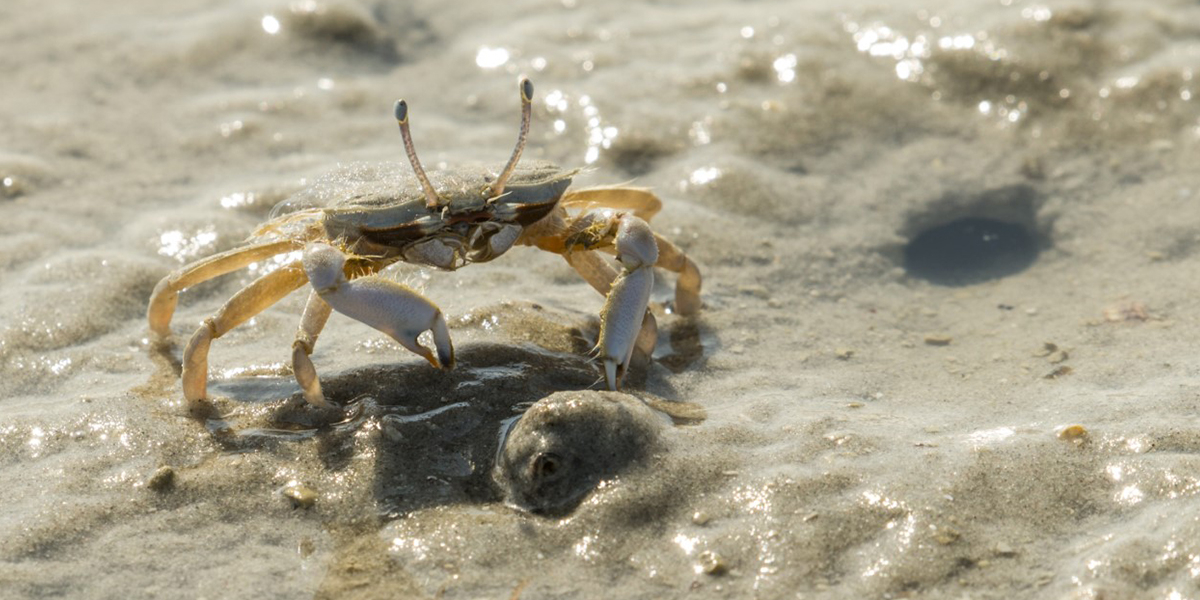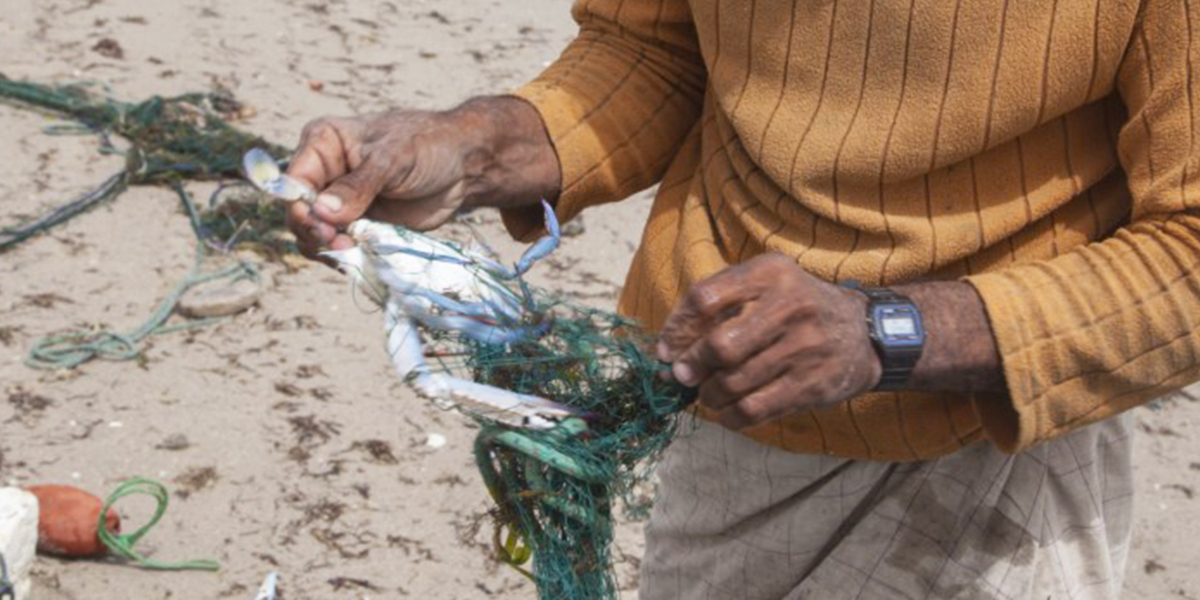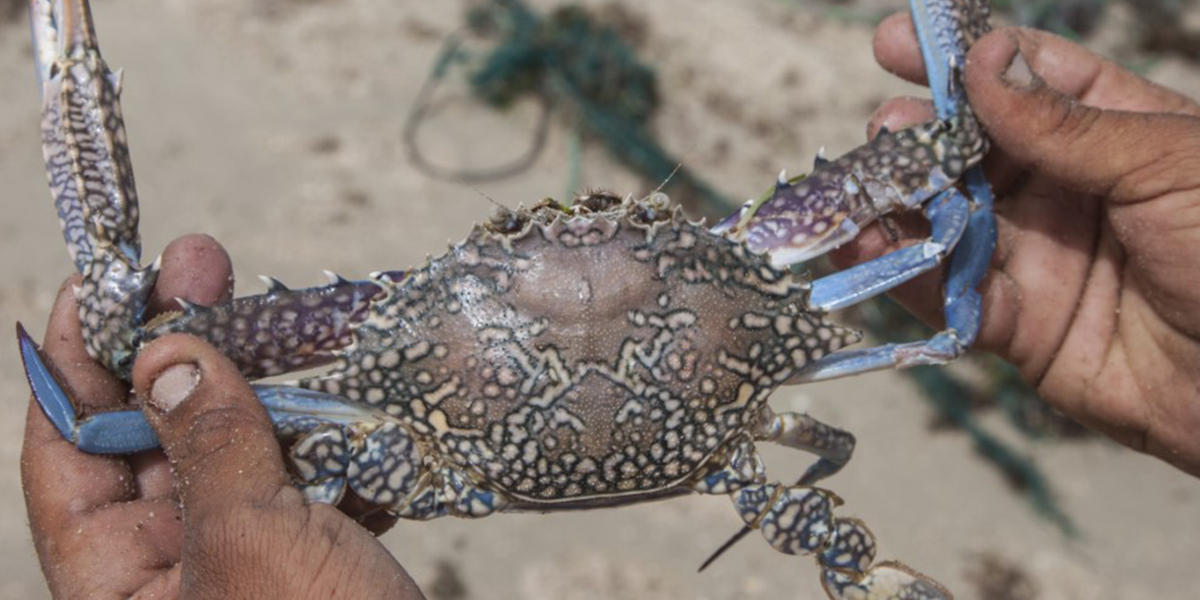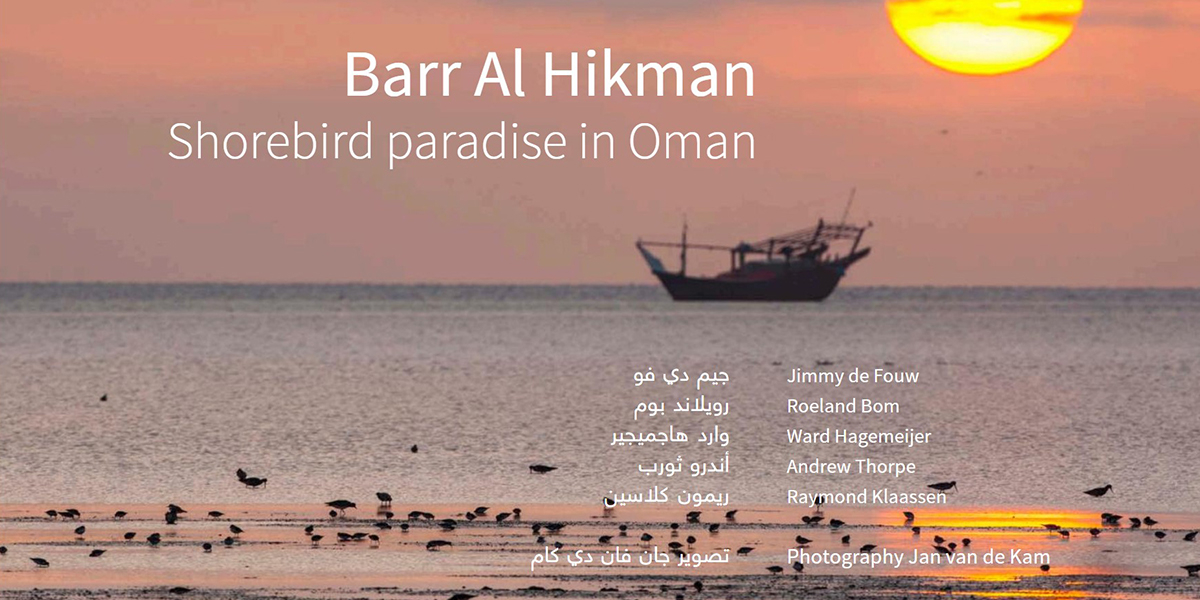Crabs are key to ecology and economy in Oman

Blue swimming crab
The mudflats of Barr Al Hikman are home to almost thirty crab species. For his research, Bom, together with colleagues in The Netherlands and at the Sultan Qaboos University in Oman, looked at the ecology of the two most abundant species. Bom: ‘Barr Al Hikman is also home to the blue swimming crab Portunus segnis. That is the species caught by local fishermen. This crab uses the mudflats of Barr Al Hikman as nursery grounds.'
The counts of Bom and his colleagues show, that there are millions and millions of these crabs in Barr Al Hikman. They are food to hundreds of thousands of birds, both migrating species, as well as birds breeding in the area, such as crab plovers. The crabs live in holes in the ground. They forage on the seagrass beds that are still abundant in Barr Al Hikman. 'Apart from the high primary production (algae) in Barr al Hikman, this reserve is also well suited for crabs because of the vastness of the area', Bom assumes. ‘The slopes of the mudflats are very gentle, so at low tide, the crabs have an immense area at their disposition.’

Eco value
The value of the crabs is not just ecological, Bom stresses. 'Local fishermen that catch the blue swimming crabs, distribute them not only through Oman, but also through the rest of the Arabian Peninsula and even to Japan. At approximately € 2,- per kilo, these crabs represent an important economic pillar, both under the region around Barr Al Hikman, as well as for the whole of Oman.'
Reserve
The protection of the reserve of Barr Al Hikman is limited to national legislation. Efforts to acknowledge this reserve under the international Ramsar-convention were never effectuated. There is, however, increasing human pressure on the mudflats of Barr Al Hikman, the authors describe, that would justify further protection. For example, there are well-developed plans to start shrimp farming around this intertidal area. 'When looking at the cost and benefits of these activities, it is important to look at the role of this reserve in the local ecology, as well as in the broader ecology of the many migratory birds that use the area', Bom says. 'Moreover, our research shows that the unique ecosystem of Barr Al Hikman plays a key role in the economy as well.'
Publication
Bom, R.A., van Gils, J.A., Molenaar, K. et al. The intertidal mudflats of Barr Al Hikman, Sultanate of Oman, as feeding, reproduction and nursery grounds for brachyuran crabs. Hydrobiologia (2020).
DOI: 10.1007/s10750-020-04418-4
Link: https://doi.org/10.1007/s10750-020-04418-4

Publication
Bom, R.A., van Gils, J.A., Molenaar, K. et al.
The intertidal mudflats of Barr Al Hikman, Sultanate of Oman, as feeding, reproduction and nursery grounds for brachyuran crabs.
Hydrobiologia (2020)
DOI: 10.1007/s10750-020-04418-4

Book
Barr Al Hikman - Shorebird paradise in Oman
In a region dominated by arid landscapes, Barr Al Hikman is a wetland pearl. Words alone cannot do it justice, so it is with pictures that we endeavour to capture the natural beauty and reveal its remarkable stories of life.
Authors: Jan van de Kam - wildlife photographer | Jimmy de Fouw, Roeland Bom, Ward Hagemeijer, Raymond Klaassen - biologists | Andrew Thorpe - ecological consultant and ornithologist